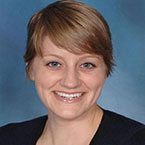By: Jenna Klotz, MD, MS, FAAP
Bell's palsy is a nerve condition that causes muscles in the face to weaken suddenly. Almost all cases of Bell's palsy affect just one side of the face, which may appear to droop.
Bell's palsy can be distressing for children and teens. The good news is that they usually recover completely. Read on to learn more.
What are the symptoms of Bell's palsy?
Each side of the face has its own facial nerve that controls its muscles. When this nerve is not working correctly, this is called a nerve "palsy" (paralysis).
With Bell's palsy, facial weakness develops somewhat quickly—over 1 to 2 days. Shortly before the weakness starts, kids may experience ear or jaw pain and painful sound sensitivity on the affected side.
On the side of the face affected by Bell's palsy, kids have trouble:
Bell's palsy may also cause kids to have difficulty speaking, keeping food or liquids in their mouth or sucking on a straw. For some, sounds may seem louder in the ear on the side with the weakness. The sense of taste on their tongue may also seem decreased on that side.
Sensation to the face should not be affected with Bell's palsy, but sometimes children say that their face feels "numb" or "weird. This is because they are having trouble moving their face on that side.
What causes Bell's palsy?
Bell's palsy is "idiopathic," which means that the exact cause is not known. But it is thought to happen when the immune system causes inflammation and swelling in the facial nerve, like after a recent infection.
What else can cause facial muscle weakness?
About half of children who develop sudden weakness on one side of the face have Bell's palsy. Sometimes, facial nerve palsy has a specific cause, such as injury or spread of a nearby infection into the nerve. When that's the case, it is not called Bell's palsy and is treated differently.
How do you diagnose Bell's palsy?
In most cases of typical Bell's palsy, no testing is needed. It can be diagnosed when a child has sudden onset weakness on one side of the face, affecting the upper and lower parts of the face.
When testing may be needed
If there is weakness or symptoms elsewhere in the body, then this is not Bell's palsy. Weakness that involves only the lower part of the face does not rule out Bell's palsy, but may need testing to exclude other causes.
Children who have a weakened immune system, autoimmune disease, or who appear sick may also need testing. These tests may include an MRI or CT scan, spinal tap or blood tests, for example.
Testing for Lyme disease may be considered if you live in an area where Lyme disease is common—especially with rare cases of Bell's palsy that affects both sides of the face. However, this testing is not needed in most routine cases.
How is Bell's palsy treated?
Steroids
Steroid medicines are often prescribed for Bell's palsy, especially when kids are diagnosed within 3 days of the facial weakness starting. It's not clear if steroids are really needed to treat Bell's palsy in children. But since they are helpful in adult cases when started within 72 hours and are relatively safe when taken over a short period, most providers will recommend treatment.
Antiviral medications
In patients with severe Bell's palsy (for example, total paralysis of muscles on one side of the face), antiviral medications may also be prescribed. This is because there is a possible link between herpes simplex virus and Bell's palsy. However, it is unclear whether this treatment increases the chance for full recovery from Bell's palsy.
Other treatments for Bell's palsy
There are other, supportive treatments for Bells's palsy to help manage symptoms. These may include:
How long does it take to recover from Bell's palsy?
Almost all kids with Bell's palsy recover completely, even without treatment.
Typically, symptoms go away within a few weeks or months, especially if the weakness was mild. In general, facial weakness from Bell's palsy should not worsen after 3 weeks and should show signs of improvement by 6 months. About 85% of children with Bell's palsy will have complete recovery by 6 months and more than 90% by 12 months.
While it's rare, some children can have severe facial weakness that does not recover completely. In these cases, additional testing may be recommended. These may include an MRI of the brain and electrical tests of the nerves and muscles, called electromyography (EMG) and nerve conduction studies. If there is still significant weakness, there are surgical treatments to improve symptoms.
Emotional support for kids with Bell's palsy
Kids with Bell's palsy may need extra emotional support. Because facial weakness can make smiling, eating and talking more difficult, children and teens sometimes feel self-conscious and isolated. Some may experience bullying. Don't hesitate to talk with your pediatrician and school for mental health support resources if needed.
More information
About Dr. Klotz
 Jenna Klotz, MD, MS, FAAP, is a pediatric neurologist and neuromuscular specialist at Stanford Children’s Health/Lucile Packard Children’s Hospital and clinical assistant professor of neurology at Stanford University School of Medicine. She is a member of American Academy of Pediatrics (AAP) California Chapter 1 and the AAP Section on Neurology external affairs and publications subcommittee. Jenna Klotz, MD, MS, FAAP, is a pediatric neurologist and neuromuscular specialist at Stanford Children’s Health/Lucile Packard Children’s Hospital and clinical assistant professor of neurology at Stanford University School of Medicine. She is a member of American Academy of Pediatrics (AAP) California Chapter 1 and the AAP Section on Neurology external affairs and publications subcommittee.
|